Getting Caught in “Kiss of the Spider Woman” Production Designer Scott Chambliss’s Perfect Web for Jennifer Lopez
Production designer Scott Chambliss is known in Hollywood for big tentpole movies— Star Trek, Godzilla: King of the Monsters, and Mission: Impossible III are a few of his films—so he was a bit shocked in 2023 when writer-director Bill Condon called him about revamping Kiss of the Spider Woman as an old-fashioned MGM movie musical. Chambliss knew exactly how to win over the man who made Dreamgirls and wrote the movie version of Chicago. “We were on Zoom and I swiveled my laptop over to this wall right there,” Chambliss tells The Credits, pointing to a vintage poster of An American in Paris. “I told Bill, ‘This is my office, this is who you’re talking to!” Condon and Chambliss clicked, and the results of their collaboration, opening Oct. 10, stars Jennifer Lopez in the title role, along with Tonatiuh and Diego Luna as political prisoners jailed in 1983 during Argentina’s notorious military dictatorship. “It’s extremely timely,” says Chambliss, who earned an MFA at Carnegie Mellon, worked in New York’s theater scene, and served as J.J. Abrams’ go-to production designer before launching his career in movies.
Kiss of the Spider Woman, which first came to life in a 1976 novel by Manuel Puig, was adapted into a 1985 movie by director Héctor Babenco and later a 1993 Broadway musical. It found a fresh hook in 2025 thanks to Lopez’s performance as a fantasy showgirl dancing up a storm on soundstages in New Jersey. The grim prison sequences were filmed in Argentina-adjacent Uruguay. Chambliss helped conjure these disparate worlds over the course of a tight, 41-day schedule.
From his home in Los Angeles, Chambliss discusses finding inspiration in the ruins of a 19th-century penitentiary, the movies of Vincent Minnelli, and Lopez’s transformative homage to Marilyn Monroe.
As a designer known for blockbuster fare like Star Trek and Guardians of the Galaxy Vol. 2, were you surprised to hear from Bill Condon about working with him on a movie musical?
I was stunned! I’ve been so typecast as a big tentpole science fiction guy, even though I’ve always wanted to do this kind of material. Still, first off, the era of old-fashioned movie musicals is long gone. Second, the thought of anybody taking me seriously for something that has nothing to do with making spaceships and monsters and crazy future planets just seemed off the table. Kiss of the Spider Woman is very much in line with what I love, but nobody had ever tapped into that aspect of my creative being.
Kiss is a familiar pop culture property. How did Bill Condon explain his spin for making the story fresh again?
He wanted to go back to ground zero, so Bill read Manuel Puig’s 1976 novel and also dove back into the treasure chest of [Kander and Ebb] songs that had been written for the ’90s musical but had been discarded. He structured the film so that the two guys [in prison] would be integrated into the musical fantasy storyline. Rather than being a Nazi romance, as it was in the book, this was going to be an MGM musical from the 1940s!
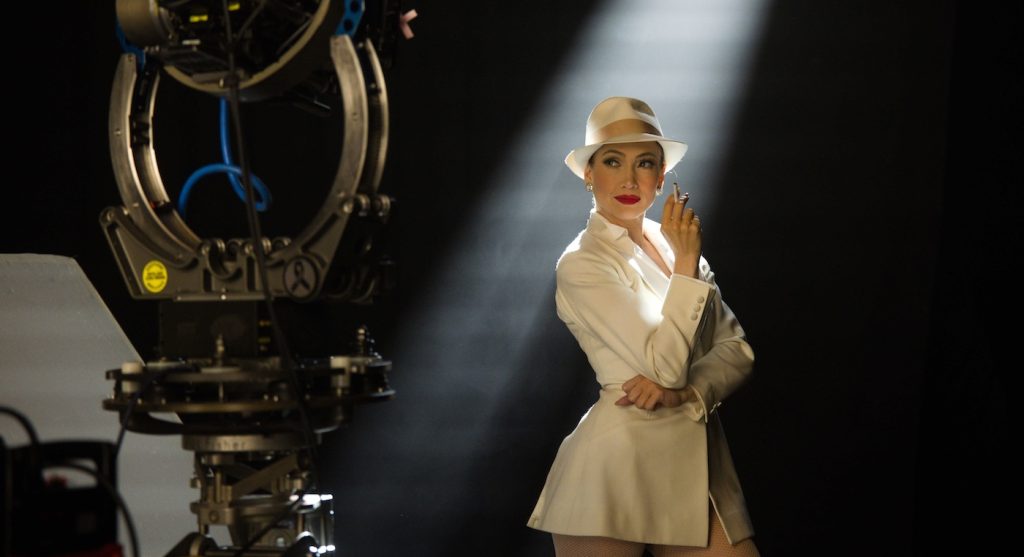
How did you go about translating that vision?
I knew the musical numbers would be so vivid in the brilliance of their Technicolor theatricality that the prison life scenes needed to be [visualized] at an operatic, melodramatic pitch. Otherwise, we’d have a really imbalanced story.
What was your approach to the prison scenes?
The original story was set in Argentina, but given its current issues, Buenos Aires was not considered the best place to film. But right across the way in Uruguay is [capital city] Montevideo, which happens to have the most dramatic and luscious ruin of a monumental old prison four or five stories tall, built in the 1890s, and completely wrecked. I loved the glamour of decay, the beautiful textures. The hardware was gone, it was stripped bare and crumbling, infested by birds, catwalks falling down, but it had this grandeur and operatic heft.
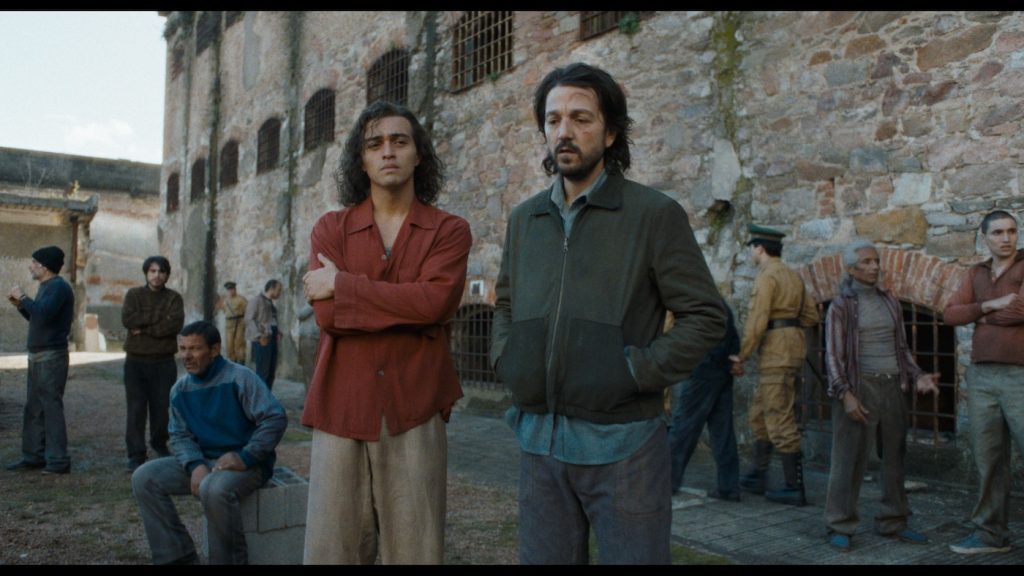
Before you traveled to Uruguay for the prison sequences, you filmed the musical numbers at Cinelease Studios in New Jersey. What was that like?
It was like a steamroller, something new every day. On the first day, we had three different sets for three different numbers ready to go on stage. It’s exciting to deal with budgetary restraints because you have to go with your gut. Like episodic television, you don’t have time to second-guess or a re-do if you f*** it up. God bless Jennifer Lopez. She’s a perfectionist and such a hard worker. Every day, she’d arrive on stage and do her numbers perfectly.
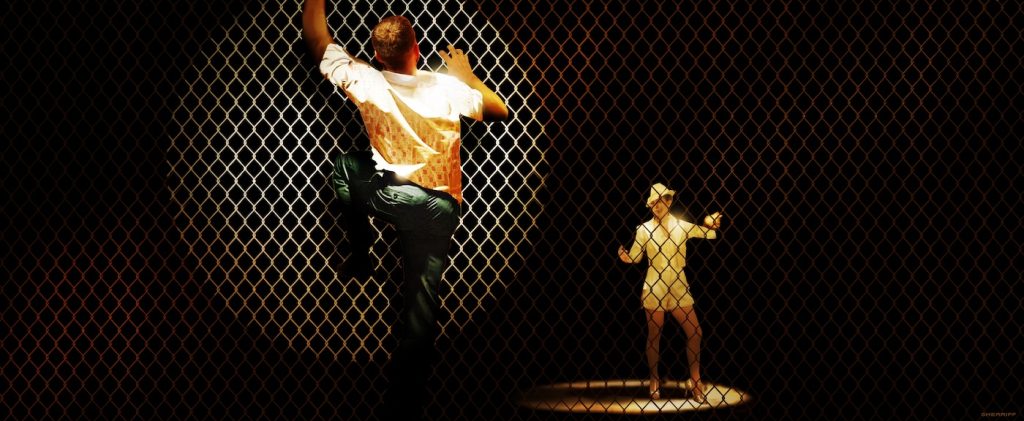
Would you tweak the sets to serve the choreography?
Yes! It was daily communication with Bill and the choreographer [Sergio Trujillo]. Every day, the choreography develops. You love it on Tuesday, but on Wednesday it’s not working anymore, so you have to change. Most of the musical sets changed right up until the moment we shot them.
Building these sets from scratch in New Jersey, were you mindful of the economic impact this labor-intensive soundstage construction would have on the local filmmaking community?
Of course, especially in times when there isn’t as much filmmaking happening in the U.S., one of the good things about a bad situation was that a lot of top people were available to work with us. I could go back and draw from the people I knew from my early days on Broadway with [Tony-winning designer] Tony Walton, like supervising art director Charlie Beale. He was very familiar with the top players who would know how to fabricate these sets.
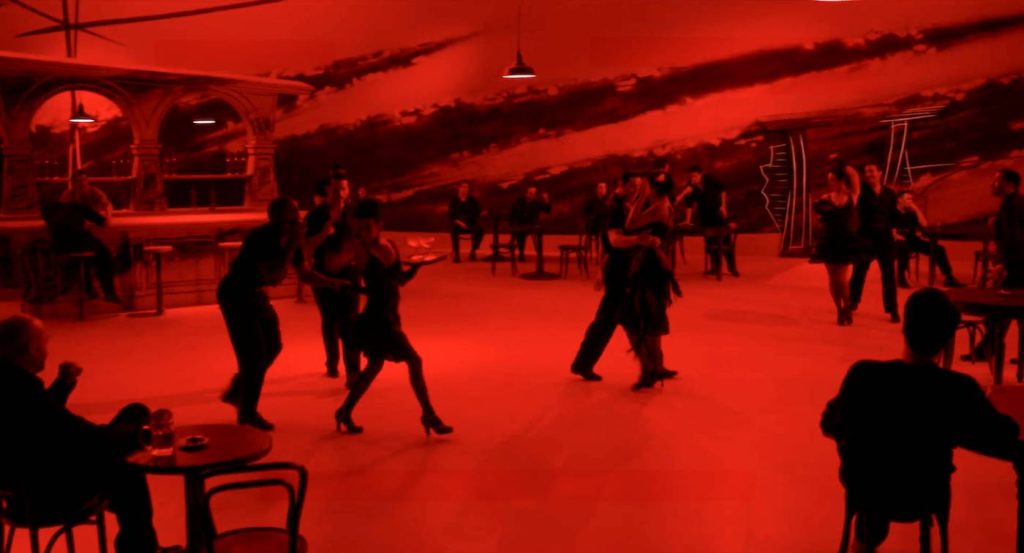
And those sets really pop! Director Vincent Minelli mastered the Technicolor aesthetic in An American in Paris and other mid-century movie musicals. Did you and Bill Condon have Minelli-style Technicolor in mind as an inspiration?
It was important to Bill and me that we authentically utilize Technicolor and stay close to what the color palettes were back then. To contemporary eyes, those colors can look naïve due to their lack of subtlety, but we needed to embrace that and make it work in positive ways for this film
It does seem like most modern movies are more muted when it comes to color.
Well, it was an interesting journey because we had 15 or 16 different Technicolor musical moments in our movie, and it’s second nature for me to build a color story with an arc, the same way actors need character arcs. I like to start at a certain place where we can keep revealing and revealing, but my initial offering to Bill, for that first Technicolor number, didn’t work for him at all.
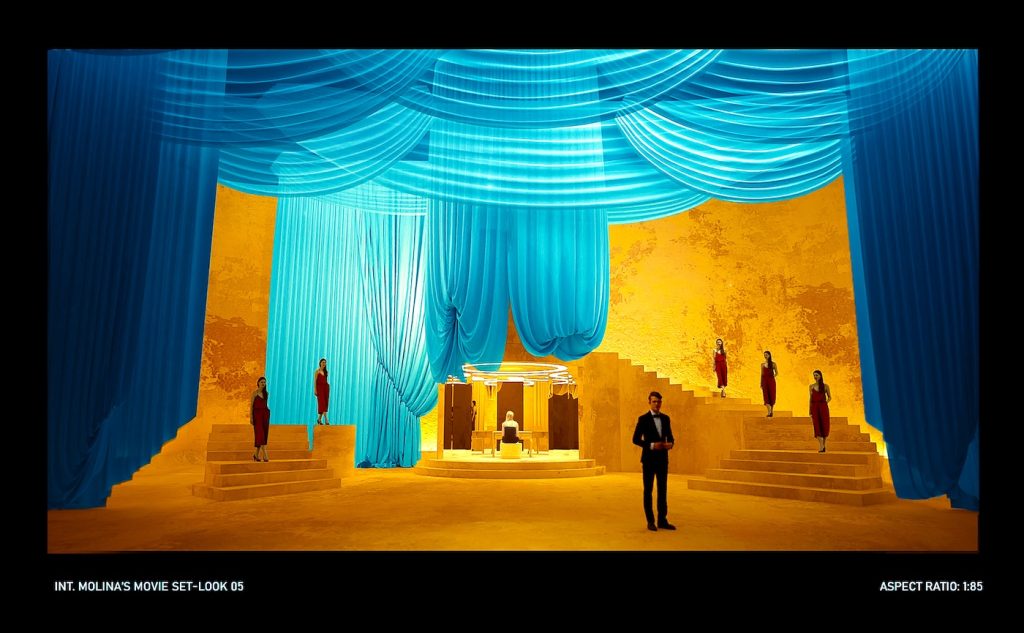
Why?
Because I was holding back. So, I modified the starting point when we introduce Jennifer Lopez’s character in her Buenos Aires boudoir with “Her Name is Aurora.” It’s Princess Blue and buttercream – nothing else. But it’s still vivid as hell. Then we follow that to the midpoint of this very colorful South American village. Then the palette slowly becomes more restrained again to the point where this number refers to one of my favorite Vincent Minelli sequences ever, called “Limehouse Blues,” from the 1945 movie Ziegfeld Follies. Our musical number, “Only in the Movies,” is kind of a dying man’s fever dream of his own life as if it were a Technicolor musical.
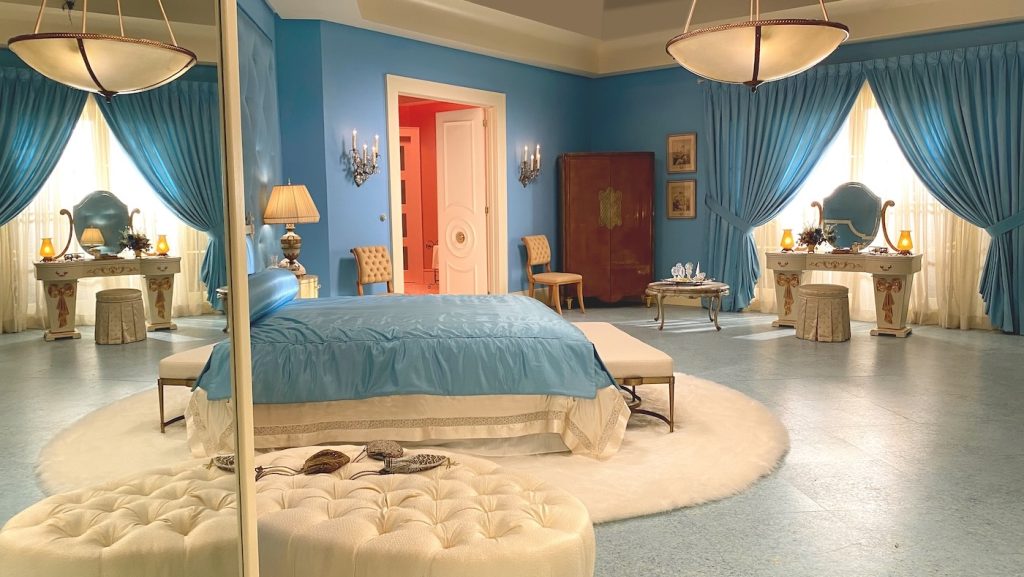
One of the numbers also pays homage to Marilyn Monroe during her early career as a movie musical ingenue, right?
The number that references Marilyn Monroe directly is called “Gimme Love.” There’s also a bit of Gene Kelley, a bit of Syd Charisse. The set’s intentionally kind of cartoony and two-dimensional, very different from films now, which are very layered with set decoration because our science fiction big-canvas images are jam-packed with detail. It’s the opposite with these old musical movie numbers. Our sets were pared down, abstracted, theatrical, and artificial-looking, and all of that is intentional. If our 1940s musical numbers looked anything like real life, we would have failed miserably. [laughing].
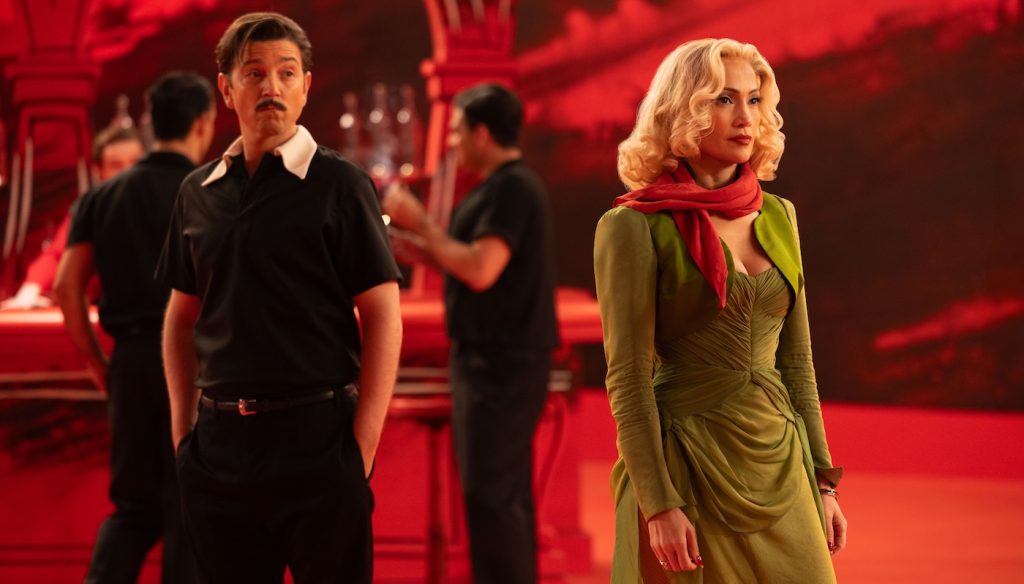
Contrasted with the musical fantasy sequences, you’ve got the two guys in a grey jail cell. Were those interiors shot in that decommissioned prison?
The cell itself is a stage set we built on a Montevideo soundstage. We spent almost three weeks in the cell with the two guys doing their scenes. We had a wonderful group of scenic artists and a construction crew who created all the wall textures and decay, the sliding doors, and the big gates. On the [real] location, our artists replicated what we’d done on the soundstage so the prison would look like it was all one thing.
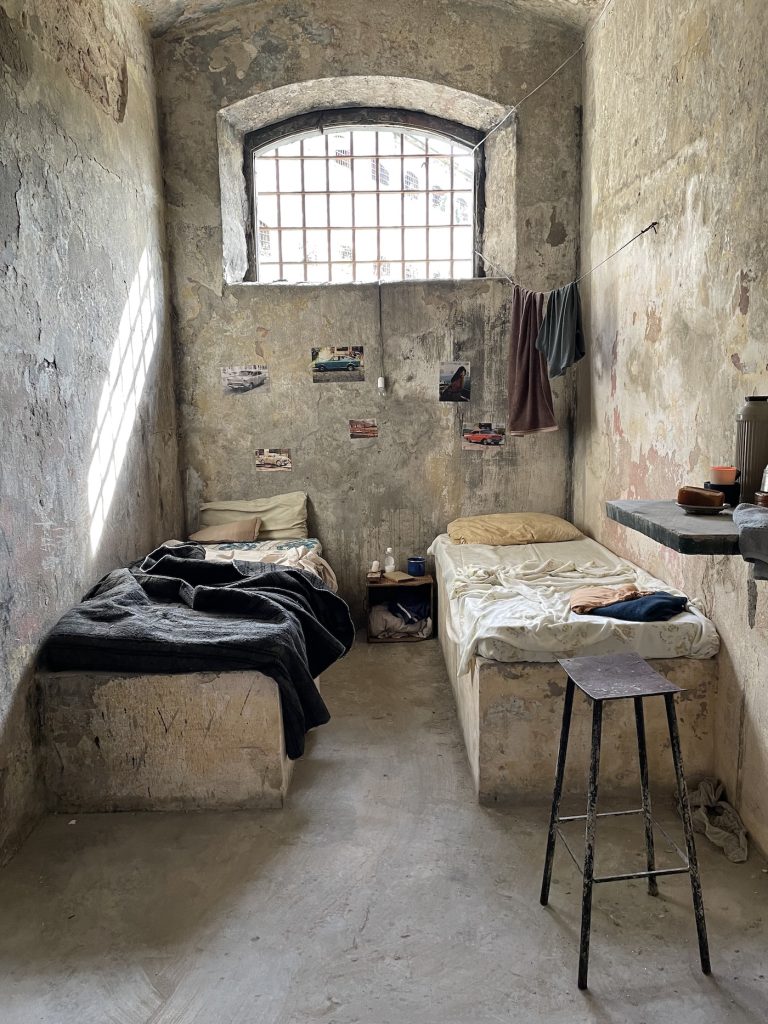
Having powered through this intensive Kiss of the Spider Woman production, what stands out as a high point?
My favorite day of filming happened in New Jersey, watching Jennifer Lopez do her Marilyn Monroe number on our red and black set. The environment, costume, and choreography showcased her at her best, and she was incredible. That was one of those days where you could just feel the electricity on stage, and everybody knew they were doing something special. It was a once-in-a-lifetime experience.
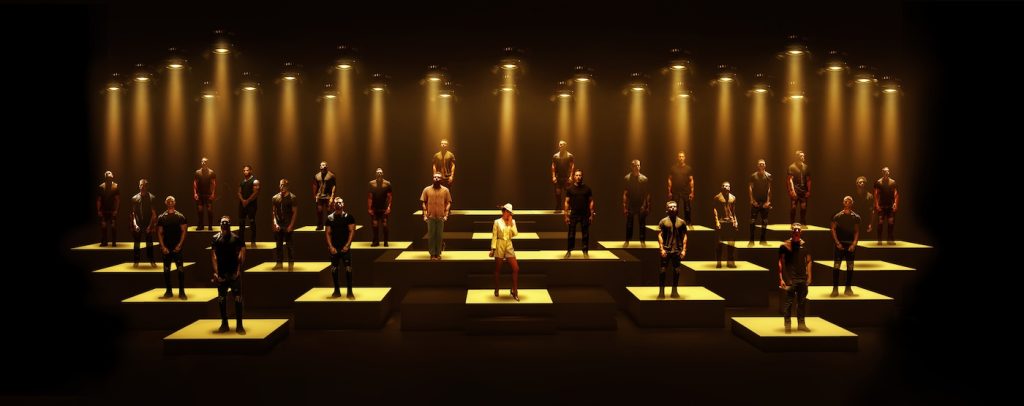
Kiss of the Spider Woman is in theaters on October 10.
Featured image: Jennifer Lopez in “Kiss of the Spider Woman.” Courtesy Lionsgate.



